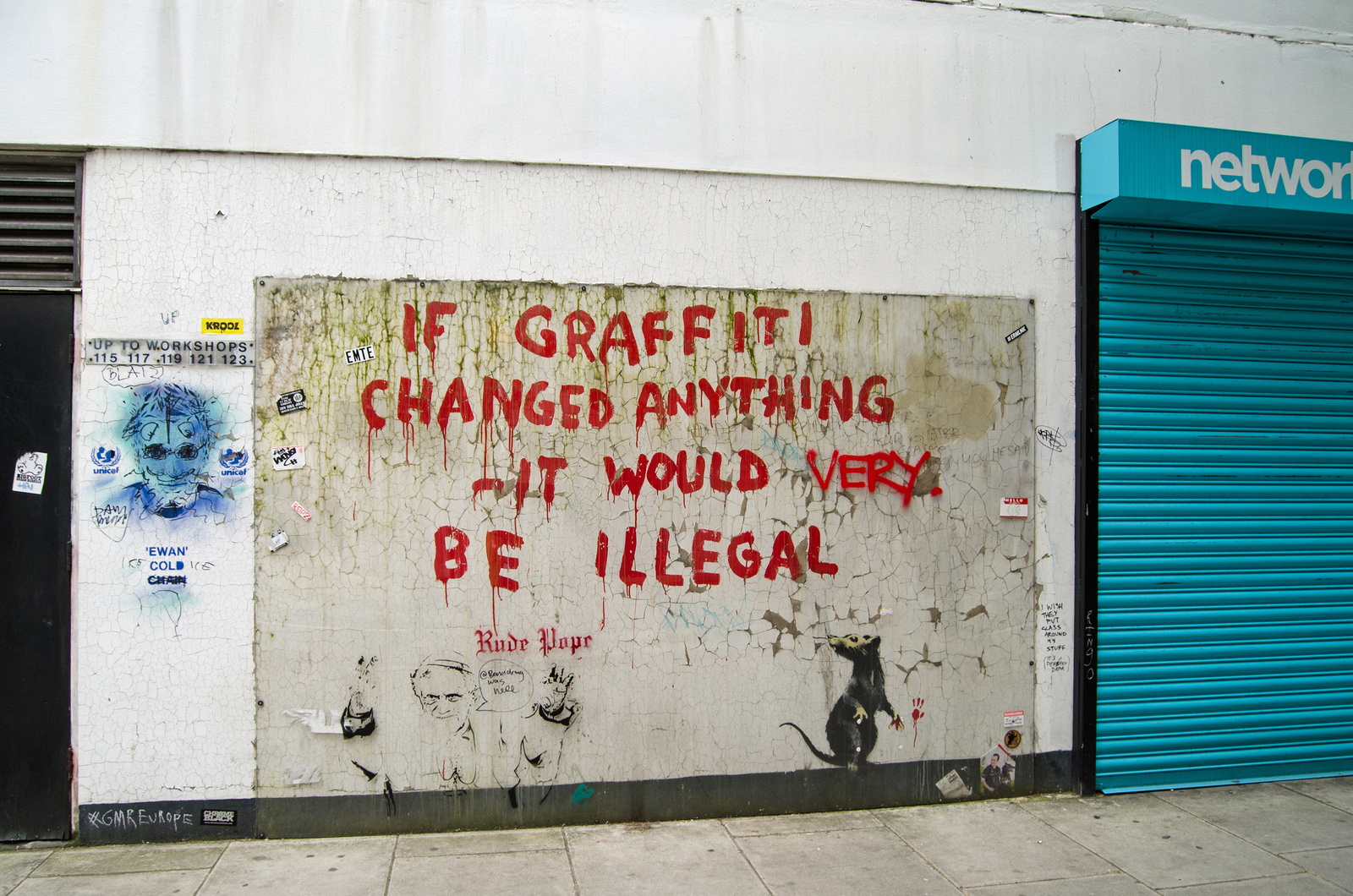As a full-fledged art movement, street art has been filling the streets of towns and cities around the world since the 1970s-1980s. However, even today, nothing is crystal clear with regard to the legal side of the matter. Someone would call it “vandalism” and a blatant violation of the law, whereas others would prefer names like “pieces of art” and “a new form of expression.” It is no wonder that the opinion on this is gravely divided. However, when it comes to Banksy, things magically turn upside down. So, is the famous street artist breaking the law?
Does the famous street artist break the law?
Sooth to say, there is no magic involved. The whole situation about Banksy and the legality of his street art is rather confusing and does not actually have clear-cut answers. Many wonder why Banksy is not in jail yet, and why the government tries to preserve his works or, at least, does not let others deface them. There are mainly two reasons why the famous street artist is still on the loose.
Banksy is regarded to be an art phenomenon. Even skeptics cannot argue the impact that his works have on the modern-day art. Banksy’s iconic murals have become an integral part of the cities’ art scenes. Thanks to the artist’s popularity, his every work becomes a hit, which attracts a good deal of attention and lots of people wishing to take a photo with a fresh masterpiece by the famous street artist.
By explaining this, we have come to the crux of the matter. First, Banksy’s art is a kind of an exception to the rule, a privilege that the society and government gave him. Second, his artworks are good money generators because of the value imposed on them. The legality of Banksy is polysemous in nature: what he is doing is de jure illegal, but de facto, it goes beyond the legal system and enters the realm of much more abstract significance – the realm of art.

